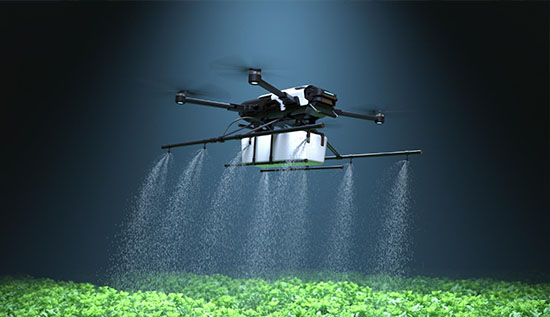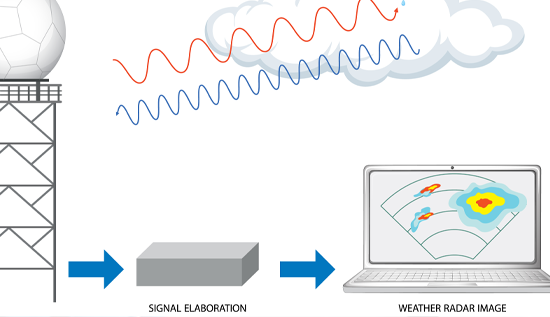Swarm Robotics in Agriculture & Logistics: Smart Automation

Swarm Robotics in Agriculture & Logistics enhances automation, efficiency, and smart coordination across modern farming and logistics operations.
Swarm Robotics in Agriculture & Logistics is transforming modern industries through distributed automation and intelligent coordination. As Agricultural swarm robots become more advanced and cost-effective, both farming and supply chain sectors benefit from greater efficiency, adaptability, and productivity. This guide explains how these systems work, how they differ from traditional robotics, and how they support real applications across fields, warehouses, and delivery networks.
Inspired by the collective behavior of ants and bees, swarm robotics relies on groups of small autonomous swarm robots working together to achieve shared goals. This approach boosts resilience, reduces risks, and adapts smoothly to changing environments.
The Evolution of Swarm Robotics in Modern Farming (Agricultural swarm robots)
Swarm Robotics in Agriculture & Logistics began as a research concept but quickly moved into real-world applications. Agricultural swarm robots are now widely tested in fields to perform tasks such as planting, scouting, watering, pest control, and selective harvesting. This shift is driven by the need to optimize productivity while reducing labor shortages and high operational costs. As farms expand in size and complexity, multi-robot systems for farming offer the scalability and precision that traditional machinery struggles to provide.
Agricultural swarm robots operate based on distributed intelligence. Instead of being controlled from a single point, each robot makes autonomous decisions based on sensor data and communication with nearby units. This allows them to maintain formation, avoid obstacles, and divide tasks efficiently. It also supports robotics for precision agriculture, where accuracy in mapping, planting, fertilizing, and irrigation is critical for maximizing crop yield.
Through these principles, Swarm Robotics in Agriculture & Logistics enables farmers to manage larger areas with greater accuracy and less environmental impact. The system also reduces downtime because the failure of one robot does not interrupt the entire operation. As growers search for sustainable ways to meet global food demand, Agricultural swarm robots will continue to play a crucial role in the evolution of farming systems.
Precision Farming with Multi-Robot Systems
One of the most significant applications of Swarm Robotics in Agriculture & Logistics is precision farming. Multi-robot systems for farming allow modern farms to achieve a level of accuracy and consistency that traditional machinery cannot match.
These robots can operate on fields without compacting soil, monitor crops individually, and distribute water, fertilizer, or pesticides only where necessary. This makes robotic for precision agriculture an essential part of sustainable farming strategies that aim to reduce waste and improve overall yield.
To help readers understand why these systems are so effective, here are the core advantages:
- Enhanced field mobility and precision: Multi-robot systems for farming can navigate narrow crop rows and uneven terrain while performing tasks with high accuracy.
- Continuous data collection: Each robot gathers real-time data on soil health, moisture levels, nutrient changes, and early disease indicators.
- Targeted interventions: Instead of large-scale applications, Agricultural swarm robots apply resources only where needed, reducing costs and environmental impact.
- Minimal human supervision: Robots operate autonomously, increasing efficiency and allowing farmers to focus on strategy rather than manual tasks.
- Improved crop monitoring: Early detection of plant stress helps prevent disease spread and supports healthier growth cycles.
These capabilities show how Swarm Robotics in Agriculture & Logistics promotes environmentally friendly practices. By reducing pesticide overuse, improving water allocation, and eliminating reliance on heavy machinery, farms can lower emissions and protect soil health. The added benefit is consistency: robots respond quickly to changing field conditions, improving resilience in modern agricultural environments.
As farming continues to digitize, the adoption of multi-robot systems for farming will grow even faster. This technology not only boosts productivity but also supports long-term sustainability, making it a vital part of the future of precision agriculture.
Swarm Robot Applications in Crop Monitoring and Harvesting
Swarm robot applications in crop monitoring and harvesting are becoming more common as Robotics for precision agriculture gains momentum. These systems collect detailed information about plant growth through high-resolution imaging, thermal sensing, and multispectral analysis. This level of monitoring is crucial for identifying diseases, nutrient deficiencies, or irrigation problems long before visual symptoms appear.
Swarm Robotics in Agriculture & Logistics allows robots to move between rows of crops, gather data, and transmit it to a central system for analysis. This same distributed intelligence supports harvesting tasks. Instead of relying on manual labor or large, expensive harvesters, Agricultural swarm robots can pick ripe fruits or vegetables selectively, reducing waste and enhancing product quality. Their small size helps them navigate narrow areas, reach delicate produce, and adapt to various crop types.
Additionally, implementing Robotics for precision agriculture helps farmers transition to more sustainable management strategies. By focusing on targeted actions, multi-robot systems for farming contribute to healthier soil, reduced chemical use, and improved ecosystem balance. Through these advancements, Swarm Robotics in Agriculture & Logistics brings measurable improvements to both productivity and sustainability in crop production.
The Power of Swarm Intelligence in Supply Chains (Cooperative robotics in supply chain)
Swarm Robotics in Agriculture & Logistics extends far beyond farming environments. In supply chains, cooperative robotics in supply chain operations have become increasingly valuable. As consumer expectations rise and delivery timelines shorten, businesses require systems that can coordinate tasks automatically and respond to changes instantly. Swarm robots offer exactly that through collective intelligence and flexible decision-making.
Cooperative robotics in supply chain systems allow autonomous units to move goods, sort packages, track inventory, and support warehouse automation. Unlike traditional centralized systems, these robots operate using swarm intelligence for autonomous delivery fleets. Each robot communicates with others to maintain efficient traffic flow and prevent congestion. This reduces errors, increases processing speed, and improves reliability.
Swarm Robotics in Agriculture & Logistic transforms the way warehouses handle daily operations. When demand fluctuates, more autonomous swarm robots can be deployed without requiring major structural changes. These systems are modular, scalable, and cost-efficient, making them ideal for supply chains that need rapid adaptation and continuous improvement.
Logistics Automation with Swarm Robotics
The logistics sector is undergoing rapid transformation due to Logistics automation with swarm robotics. This approach automates complex transportation and storage tasks using fleets of small, autonomous machines that operate collectively. Companies use Swarm Robotics in Agriculture & Logistics to improve efficiency in warehouses, distribution centers, and delivery networks.
Logistics automation with swarm robotics enhances sorting operations, pallet movement, packaging systems, and last-mile delivery. Autonomous swarm robot can map surroundings, detect obstacles, and adjust routes without human assistance. This ability is key for the future of swarm robotics in logistics and smart farming, where speed and accuracy are essential to meeting customer demands.
The scalability of Logistics automation with swarm robotics also helps companies handle seasonal peaks. Instead of expanding infrastructure, organizations simply add more robots to the fleet. As technology advances, these systems will integrate with AI forecasting tools, enabling prediction-based movement of goods and dynamic route optimization. This makes Swarm Robotics in Agriculture & Logistics an essential asset for any sector relying on supply chain efficiency.
Autonomous Swarm Robots in Smart Farming and Delivery
Autonomous swarm robots are at the heart of Swarm Robotics in Agriculture & Logistics and play a critical role in both farming and transportation industries. Their ability to function independently while collaborating with others makes them ideal for large-scale and complex environments such as farms and distribution hubs.
In agriculture, autonomous swarm robots perform seeding, monitoring, spraying, and harvesting without constant supervision. This reduces labor demand during peak seasons and increases overall consistency. Meanwhile, in logistics, autonomous swarm robots form the backbone of intelligent delivery fleets. They use swarm intelligence for autonomous delivery fleets to coordinate movement, avoid traffic, and streamline last-mile delivery.
These robots rely on advanced sensors, communication modules, and machine learning algorithms. Their ability to learn from previous patterns enhances performance over time. As organizations continue to adopt Swarm Robotics in Agriculture & Logistics, the use of autonomous swarm robot will expand into new sectors such as mining, construction, and disaster relief.
How Swarm Robotics Is Transforming Agriculture and Logistics (Robotics for precision agriculture)
Understanding how swarm robotics is transforming agriculture and logistics involves looking closely at how these systems improve efficiency, sustainability, and overall operational performance. When Robotics for precision agriculture is integrated with swarm robotics, farms can automate labor-intensive tasks such as planting, crop monitoring, irrigation, and targeted spraying. This shift reduces human workload, lowers operational costs, and ensures more accurate resource management across large farming landscapes.
Below are the key ways swarm robotics reshapes agriculture:
- Higher efficiency through distributed automation: Multiple robots work simultaneously, enabling faster task completion compared to manual labor or single large machines.
- Better accuracy in crop treatment: Robotic for precision agriculture ensures water, fertilizer, and pesticides are applied only where needed, reducing waste and protecting soil health.
- Continuous field monitoring: Agricultural robots can gather real-time data on crop conditions, enabling earlier detection of issues such as disease or nutrient deficiencies.
- Reduced labor dependency: Farms facing worker shortages benefit from automation that can operate day and night with minimal human supervision.
In the logistics sector, Swarm Robotics in Agriculture & Logistics brings equally transformative improvements. Distributed fleets of mobile robots support faster order processing, real-time inventory tracking, and seamless warehouse operations. Cooperative robotics in supply chain environments improves resilience by allowing robots to self-organize and distribute tasks efficiently.
Future of Swarm Robotics in Logistics and Smart Farming
The future of swarm robotics in logistics and smart farming looks promising as technological advancements continue to accelerate. Artificial intelligence, machine learning, and sensor technology are improving the performance and decision-making of distributed robot fleets. As Swarm Robotics in Agriculture & Logistics becomes more integrated with these technologies, adoption will grow across global markets.
In agriculture, future systems will use predictive analytics to determine planting times, manage irrigation schedules automatically, and detect crop threats instantly. Agricultural swarm robots will work alongside drones, soil sensors, and AI platforms to create a fully connected ecosystem.
In logistics, the future of swarm robotics in logistics and smart farming includes autonomous delivery networks that operate 24/7. Robots will coordinate with each other to adjust routes based on traffic, weather, or delivery demand. Warehouses will use self-organizing fleets that require minimal human oversight.
Swarm intelligence for autonomous delivery fleets will become even more sophisticated, enabling robots to handle variable environments, interact with infrastructure, and perform multi-step tasks. This future vision highlights how central Swarm Robotics in Agriculture & Logistic will be to the development of smart industries.
Conclusion
Swarm Robotics in Agriculture & Logistics is shaping the future of farming and supply chain efficiency. Through Agricultural swarm robots, multi-robot system for farming, cooperative robotics in supply chain operations, and autonomous swarm robots, organizations gain a scalable and resilient solution to modern challenges.
These systems support Robotics for precision agriculture, enhance logistics automation with swarm robotics, and improve accuracy across various applications. As advancements continue, the role of swarm robotics will expand significantly, leading to smarter, more sustainable, and more responsive farming and logistics sectors.
Frequently Asked Questions
1. What is Swarm Robotics in Agriculture & Logistic?
It is the use of coordinated multi-robot systems to automate farming and supply chain operations through distributed intelligence.
2. How do Agricultural swarm robots work?
They operate autonomously, communicate with each other, divide tasks, and collect data to improve farming efficiency.
3. What are the benefits of multi-robot system for farming?
They increase accuracy, reduce labor costs, improve crop monitoring, and support sustainability through targeted interventions.
4. How does logistics automation with swarm robotics help supply chains?
It accelerates sorting, movement, and delivery processes while improving accuracy and reducing operational disruptions.
5. Are autonomous swarm robot suitable for large farms?
Yes, their scalability allows them to operate efficiently on farms of any size, improving precision agriculture outcomes.
6. What is the future of swarm robotics in logistics?
Future systems will support fully autonomous delivery fleets, predictive routing, and self-organizing warehouse operations.
7. How does swarm intelligence improve autonomous delivery fleets?
It helps robots coordinate movement, avoid congestion, adapt to conditions, and optimize delivery routes.
More Articles
 19 Nov 2025
19 Nov 2025
Ultra-Low Latency Networks for VR/AR: Optimized Performance
🚀 Discover how Ultra-Low Latency Networks for VR/AR are transforming real-time experiences with 5G, edge computing, and seamless data transmission.
 18 Nov 2025
18 Nov 2025
DAO Governance Trends: Evolving Models & Best Practices
Thorough analysis of DAO Governance Trends highlighting upgraded governance systems and evolving models shaping decentralized organizations today.
 18 Nov 2025
18 Nov 2025
Brain-Computer Interfaces (BCI): Latest Technology Trends
Keep ahead with the latest developments in Brain-Computer Interfaces (BCI), from wearable neurotechnology to AI-enhanced device control and robotics.
 17 Nov 2025
17 Nov 2025
Digital Identity Solutions: Secure Transactions Online
Experience safer digital banking through biometric identity verification and multi-factor authentication solutions.